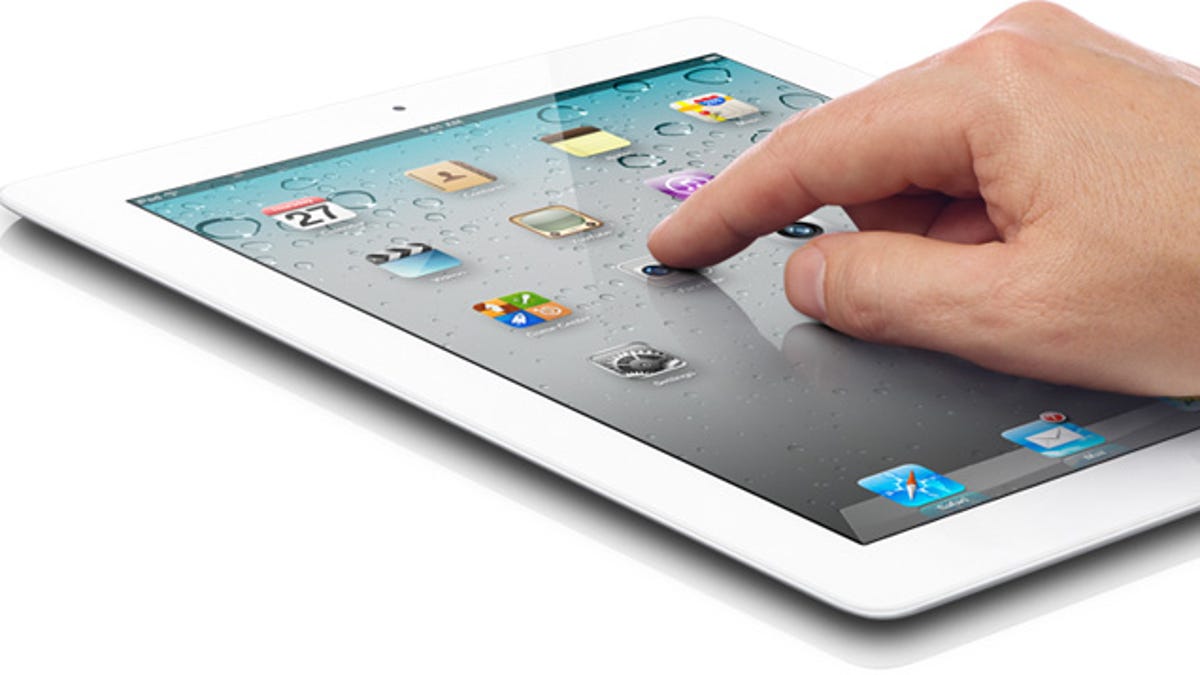Apple scores broad patent on touch screens
Patent describes how a touch screen is used to interact with contents on a display. And given Apple's recent history with patent lawsuits, it could prove to be another tool in litigation.

The U.S. Patent and Trademark Office has awarded Apple a key patent for touch screen functionality on portable devices, such as the iPhone and iPad.
Apple's patent, which the company applied for in 2007, boils down to one simple focus: when a person uses their fingers to interact with the touch screen, the software reacts to that gesture. Images that Apple included with its patent application show that functionality being implemented across several different applications, including a Web browser and a home screen.
Here's the more technical description:
"A computer-implemented method, for use in conjunction with a portable multifunction device with a touch screen display, comprises displaying a portion of page content, including a frame displaying a portion of frame content and also including other content of the page, on the touch screen display," the patent abstract reads. "An N-finger translation gesture is detected on or near the touch screen display. In response, the page content, including the displayed portion of the frame content and the other content of the page, is translated to display a new portion of page content on the touch screen display."
The patent win comes at a time when Apple is ensnared in several patent-related battles with other companies.
Nokia sued Apple in October 2009 for allegedly infringing patents related to smartphones being able to run on GSM, Wi-Fi, and 3G networks. The claims also mentioned patents Nokia owned related to mobile device security and encryption.
Apple responded with a countersuit in December 2009, alleging that Nokia violated 13 of its own patents. However, Nokia announced last week that Apple had called it quits and the companies had agreed to a patent-licensing deal. A subsequent analyst report on the matter suggested Apple's licensing costs to Nokia could reach $608 million.
But Nokia is just one of Apple's problems.
In April, Samsung announced that it had filed a patent-infringement case against Apple in the U.S. District Court for the Northern District of California San Jose division, alleging that the iPhone maker violated 10 of its patents, including one that allows smartphone owners to use the Web while on a phone call. Apple alleged in its own lawsuit against Samsung in April that the company was violating patents on its user interface and mobile-device design.
The Cupertino, Calif.-based company upped the ante last week in an amended complaint, saying that Samsung has been heavily "copying" its own products.
"[Samsung's] products...blatantly imitate the appearance of Apple's products to capitalize on Apple's success," Apple wrote in its complaint. "The copying has been widely observed in the industry and has been mentioned in multiple articles reviewing Samsung products."
Exactly how Apple's touch-screen patent will play into its current litigation remains to be seen. But as noted, it's a far-reaching patent, and many portable-device makers have products that allow for multitouch gestures that control software on the display.
Apple has not immediately responded to request for comment on whether or not it will use the latest patent against competitors.
Update at 7:45 a.m. PT to include more details

